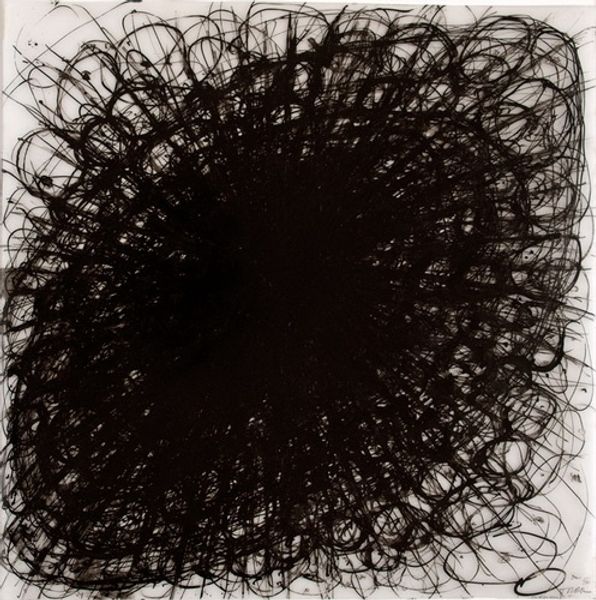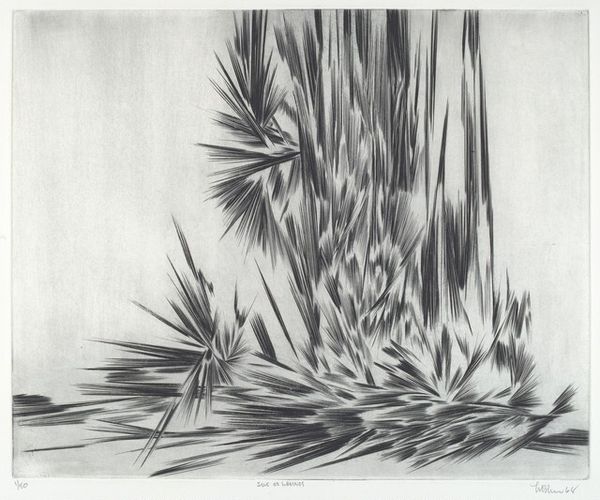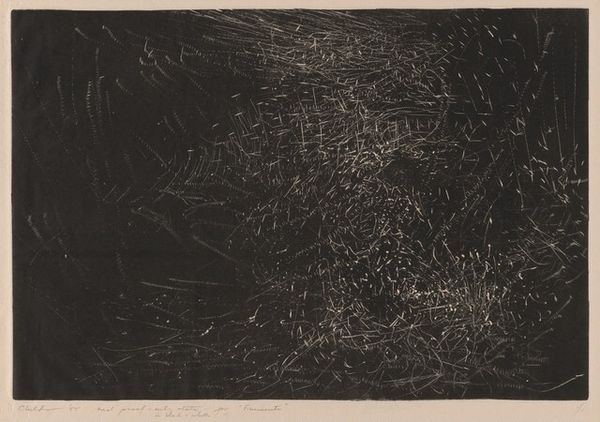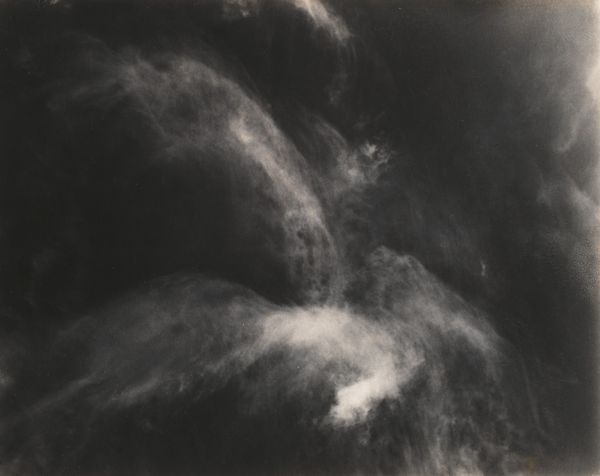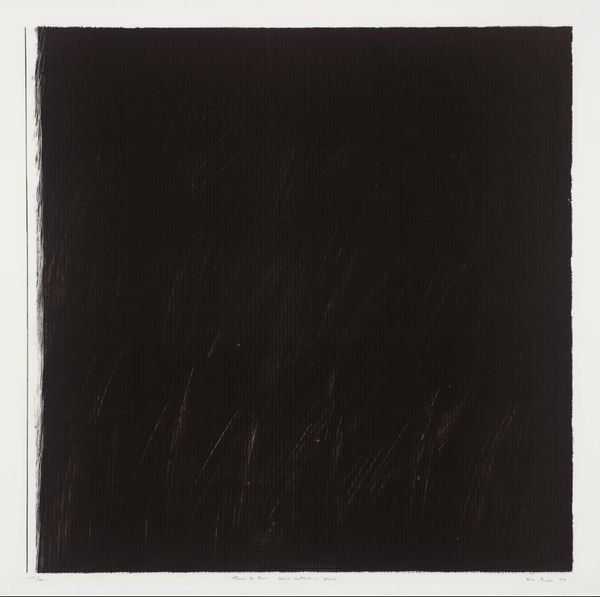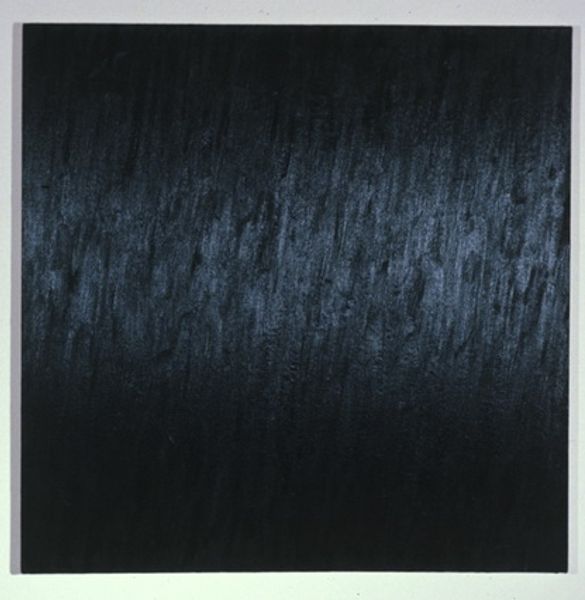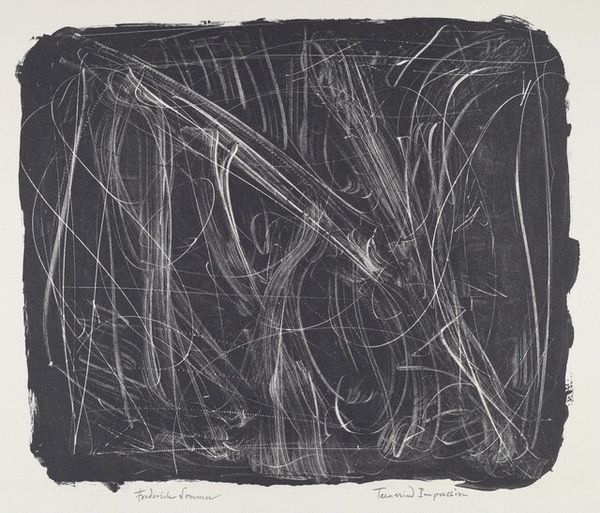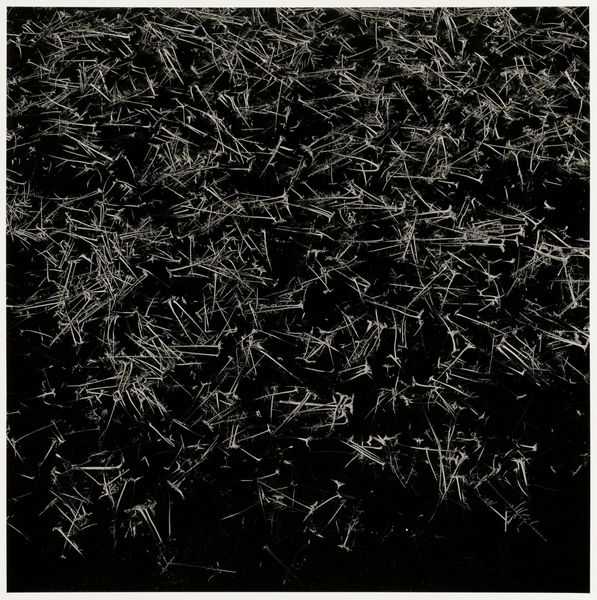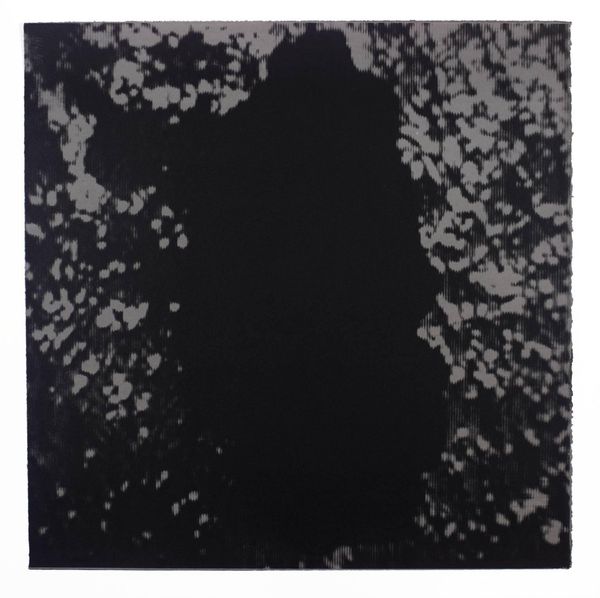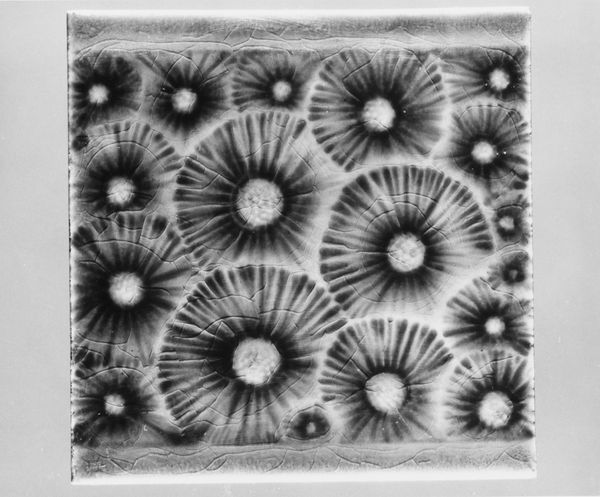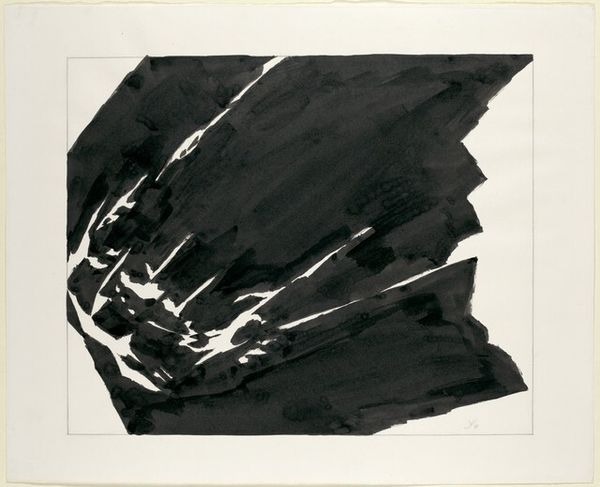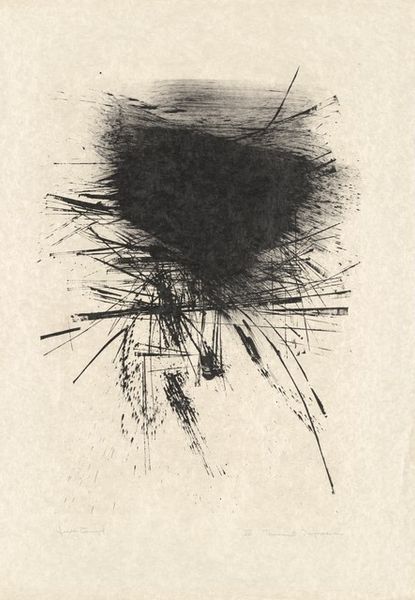
drawing, print
#
drawing
#
organic
# print
#
organic pattern
#
monochrome
Dimensions: plate: 149 x 155 mm sheet: 345 x 194 mm
Copyright: National Gallery of Art: CC0 1.0
Editor: This is Craig McPherson’s “Dahlia,” a drawing and print from around 1978-79. It's monochrome, a stark white image of the flower against a black background. The details are incredible, but what strikes me most is the contrast. What's your take on this piece? Curator: We have to consider the material conditions of its production. It's not just *of* a flower, it *is* a print, likely an etching. What kind of labor was involved in creating the plate, inking it, and pressing it? Consider too the limitations of monochrome – a conscious choice restricting available materials and affecting dissemination. Was the artist pushing back against trends or market expectations with this approach? Editor: I hadn't really thought about it as a choice against something, but that makes sense. Do you think that the focus on printmaking materials elevated the status of printmaking itself at that time? Curator: Absolutely. Artists like McPherson, by emphasizing process, challenged the traditional hierarchy placing painting above printmaking. They drew attention to the skills, the press, the paper…elements previously relegated to craft, demanding that they be seen as integral to the art itself. The image becomes inseparable from its making. How does appreciating that labor affect your reading of the delicate flower? Editor: I guess it makes me think of how temporary and fragile the flower is, and that McPherson immortalized it through a labor-intensive printing process. Thank you, that gives me so much to think about! Curator: Indeed! Thinking about the labor and material involved reframes what we even mean by 'natural' versus 'artificial'.
Comments
No comments
Be the first to comment and join the conversation on the ultimate creative platform.


